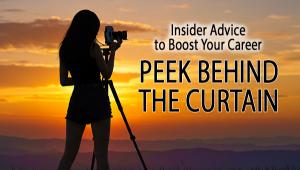Time, Expenses...And Experience
How To Bill For Your Work, Whether You Are A Pro Or An Amateur
As a pro photographer I get
a lot of questions about my work. While many address my equipment and
techniques, a lot of people want to know what I earn. There is no question
more loaded than "How much do you make?" (Perhaps except
"How's your sex life?") While a client has a right
to know how much I'm going to charge, does another photographer?
|
|||
The Commercial Realm |
|||
How and where the image is
to be used is an important consideration, and one that has largely made
the term "day rate" an anachronism. How can you figure what
a specific image usage is worth? There are several resources a photographer
should have access to. An excellent source for information about all American
magazines is www.editorialphoto.com. There you will find a list of all
the currently published magazines, their total circulation, cost for a
full color, full page ad, and even the rate they pay for photographers
they hire. (Imagine accepting an assignment from Newsweek with its three
million circulation, $175,000 per page ad rate, and their 1970s era $400-$1500
day rate for photographers.) Why is this information important to you
if you're not shooting editorially? Because if your client is committing
to a $175,000 ad they should be charged more than if they're committing
to a $5000 ad. How Much Is Enough? Do The Math Time & Expenses No Surprises "Simple"
Jobs |



















































